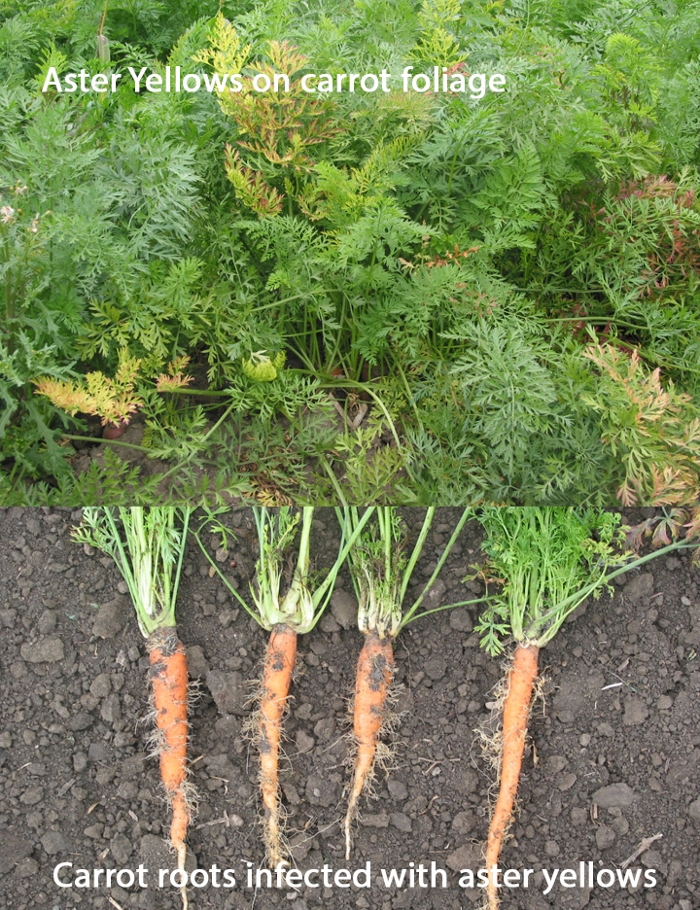
Aster yellows
Phytoplasma
Aster yellows is a type of bacteria called a phytoplasma which multiplies inside the plant, in phloem tissue.
It is most often carried by the aster leafhopper (Macrosteles quadrilineatus) aka the six-spotted leafhopper, but other leafhoppers also carry the disease. Leafhoppers do little direct damage to plants when they are feeding. However if they have the phytoplasma, they infect plants when they pierce and suck on plant tissue.
Symptoms:
Aster yellows affects a wide variety of vegetables but is most common in carrots in the home garden. Celery, romaine, head lettuce, cucumbers, sunflowers, sage, potatoes and other herbs and vegetables can become infected. Perennial and annual flowers such as asters, chrysanthemum, calendula, delphinium, echinacea, erigeron, gaillardia, marigold, petunia, and Shasta daisy are occasionally affected. Aster yellows also affects agricultural crops such as canola.
- Carrots may have yellow to red to purple young foliage. There may be a mass of spindly pale shoots that resemble a witches broom. Roots and tubers can have excessively hairy roots, stunted growth and poor flavour.
- Celery may have yellow, elongated, twisted upright leaves. Aster yellows affects flavour.
- Lettuce heads may have latex-like spots.
- Potato plants may have purple leaves and produce above-ground tubers which may become dark when cooked.
- Perennial or annual flowers may show clear veins on younger leaves, turning from green to yellow. Leaves may take on a purplish cast. Flowers become distorted and tiny and take on a greenish colour. Plants may also exhibit witches broom growth.
- Damage in the garden may be patchy or spotty because it spreads where insects feed.
Aster yellows shows up when leafhopper populations are high. The damage to plants (especially carrots) is noticed most often in late summer. Leafhoppers do not usually survive winter on the prairies. Adult leafhoppers populations usually migrate from warmer areas south of the border to the prairies in spring.
Control:
- Avoid using insecticides which also kills natural predators of leafhoppers, which can provide moderate control in small infestations. Spiders, minute pirate bugs, lacewings, ladybugs, beetles and birds feed on leafhoppers.
- Row covers can provide some protection against leafhoppers.
- The aster yellows phytoplasma can overwinter in perennial weeds such as thistle, plantain, dandelions and others, so keep gardens cleared of weeds.
- Remove and destroy affected plants.
- Remove all plant residue in the vegetable garden after harvest.
Related research: USask researcher develops new tool for detecting aster yellows disease in leafhoppers in canola fields.


